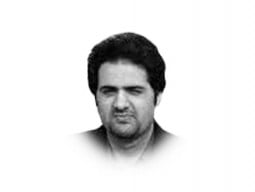
A ‘great leap forward’ is being witnessed in India today in terms of its vibrant economy, modernisation of its infrastructure and leadership role in the realm of foreign policy. Barring its domestic fault lines viewed in the context of Hindu nationalism and severe human rights violations in illegally occupied Jammu & Kashmir, the depth of India’s strategic vision is able to neutralise negative images and focus on transforming the country as a major player in the world today.
In January 2022, Tata Company of India bought Air India for $2 billion. Interestingly, the Indian government had nationalised Air India after the partition when it was owned by Tata Company but after around 70 years it purchased the same airline and decided to buy 250 airbuses and another 250 other passenger planes at a cost of $100 billion. Tata’s decision to revamp Air India by purchasing 500 planes in coming
eight years is a major development in world aviation industry and reflects a great leap forward in India’s strategic vision to compete internationally in major fields of communications, travel and technology.
Likewise, India holds the presidency of G-20, a major international group of industrialised countries, and the group’s 18th summit will be held in New Delhi on 9-10 September 2023. Whereas the G-20 Foreign Ministers’ meeting held in the Indian capital in early March this year is another opportunity for the sitting government to host an event of global significance. How this surge in Indian diplomacy and economy should be a lesson for Pakistan is not difficult to gauge.
India was way behind Pakistan in key economic indicators five decades ago. Its currency was lower than Pakistan’s and its per capita income along with economic growth rate lagged behind ours, but the‘great leap forward’ took place in 1991 when Dr Manmohan Singh took charge as Economic Affairs Minister and opened up his country’s economy attracting several hundred billion dollars of foreign direct investment. Indian foreign exchange reserves which were less than $6 billion in 1991 are now more than $600 billion. PIA, which was world’s finest airline 5 decades ago, has now touched the rock bottom with a debt of $100 billion. Indian railways has the world’s largest network with high speech trains connecting various cities. In 1984, Calcutta (now Kolkata) became the first South Asian city to have underground metro train which is now available in Delhi, Mumbai, Bangalore and Chennai. There is a long list of India’s achievements made in the last three decades along with several hundred billion dollars worth of IT exports, remittances and tourism.
India, like China, focused on the policy of self-reliance and a simple lifestyle which paid off as the two Asian giants are the world’s second and fifth largest economies. Eradication of poverty, illiteracy, empowerment of women, youths and transforming majority of population from liability to an asset made it possible for China and India to influence global economy, technology and politics. The Indian diaspora has had a notable impact on the policies of major world capitals which is reflected in their placement in influential positions like the US Congress as well as EU and NATO headquarters in Brussels.
The depth of India’s strategic vision which has transformed it as the world’s fifth largest economy and an influential player in global affairs is because of three main reasons.
First, it is not only Dr Manmohan Singh who is credited of countless achievements in Indian economy but also its current Minister of External Affairs S Jaishankar who is the brain behind his country’s ‘great leap forward’ in the arena of foreign affairs. From any stand-point, it is the leadership which is responsible for either destroying or making a country. Imbued with skills, competence, integrity and other leadership qualities, Jaishankar, the son of former Indian strategic icon K Subrahmanyam, has a major contribution to shaping his country’s foreign policy and strategic thought process with an aim of countering challenges and projecting India’s image and power in the world today. It is because of Indian leadership since 1947 that military has not usurped power and is under a civilian control. One can criticise the Modi regime over its projection of Hindu nationalism and usurping the rights of religious minorities, but its adherence to political process and focusing on governance and economy is helping India take centre stage in global affairs.
Second, ownership and strategic vision in transforming India as a major power is a reality. In the last 32 years, like China, India has managed to pull millions of people from poverty; modernize infrastructure; provide opportunities in the field of information technology; and focus on scientific education. As a result, if China is world’s second largest economy, India is the fifth and is set to overtake Japan and Germany to become the world third largest economy by 2029. Will India be able to maintain its current economic growth and modernisation of infrastructure depends on its leadership both in the government and in opposition. Unlike Pakistan, where political stability has long been non-existent, resulting in economic chaos, in India things are different where despite cleavages, political parties do not compromise on the country’s integrity and stability. Pakistan’s dismal performance in economy and unabated political polarisation reflects its failure to put its own house in order. Few years ago, the Indian PM in a public address challenged Pakistan to compete in poverty alleviation, economy and governance and ridiculed that his only western neighbour is unable to control things in Sindh, Balochistan, K-P and in G-B. While there may be exaggeration in India’s comparing with Pakistan but pragmatic public perception does reflect New Delhi’s growing confidence projecting its power in the world today. Buying 500 passenger planes for Air India in coming eight years is just one example of the booming Indian aviation industry. Manufacturing of electric buses and cars in order to offer clean and cheap energy is another evidence of how innovation is patronised by the Indian government in order to improve quality of life of its people.
Third, individuals and institutions — with foresight, vision, competence and clarity — brought about a miracle in India in just three decades, transforming the country into the world’s fifth largest economy. Facts on the ground should be the yardstick to judge the performance of Pakistan’s eastern neighbour rather than holding prejudices and unrealistic and negative perception about its perceived 'enemy'.
The writer is former Dean Faculty of Social Sciences, University of Karachi and can be reached at amoonis@hotmail.com




1734609344-0/Untitled-(69)1734609344-0-165x106.webp)
1721739746-0/BeFunky-collage-(12)1721739746-0-165x106.webp)






1734468458-0/Copy-of-Untitled-(50)1734468458-0-270x192.webp)

1734511806-0/Untitled-design-(5)1734511806-0-270x192.webp)





COMMENTS (27)
Comments are moderated and generally will be posted if they are on-topic and not abusive.
For more information, please see our Comments FAQ